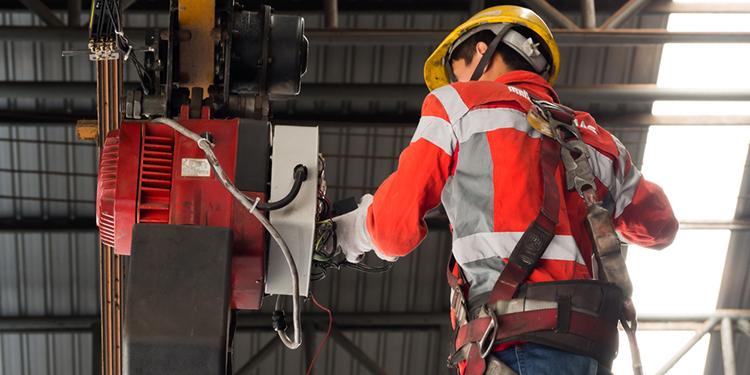Training, Certification Programs Keep Overhead Lifting Environments Safe While Maximizing Uptime

To ensure the safest and most productive working environment, ongoing training on proper use of all equipment is a must. The same rule applies to overhead handling systems. Employees who are properly trained and certified to operate and repair cranes, hoists and monorails have not only proven their competence in using the equipment but also are more valuable to their operation. Additionally, in certain areas of the country and on certain types of equipment, training and certification is a requirement.
Fortunately, training on today’s overhead lifting solutions is not an expensive commitment. That’s because many suppliers—including the members of MHI’s Overhead Alliance (which includes the Crane Manufacturers Association of America (CMAA), the Hoist Manufacturers Institute (HMI), and the Monorail Manufacturers Association (MMA))—typically offer a range of free or low-cost training courses either at their facilities or through their dealer network.
These training sessions include proper operation, inspections, routine maintenance and repair of the systems, as well as appropriate certifications. For example:
- CMAA offers an Operational Guide for Lifting Devices, as well as Overhead Crane Operator Certification through the National Commission for the Certification of Crane Operators (NCCCO).
- HMI has published multiple operator manuals and recommended practices for hand, lever and powered hoists, including inspection and maintenance.
- MMA provides recommended practices for the operation of workstation cranes and patented track systems.
All three industry groups are a part of the Occupational Safety and Health Administration’s (OSHA) Crane, Hoist and Monorail (CHM) National Alliance. Through the OSHA CHM Alliance, the organizations provide information, guidance and access to training resources that help protect the health and safety of worker using hoists, cranes and monorails. A specific emphasis has been placed on training programs designed to reduce workplace incidents and prevent employee exposure to electrical shocks, electrocution, falls from elevation, and being struck by moving equipment.
To also reduce downtime and its associated costs, Overhead Alliance members frequently offer training courses for maintenance personnel, helping them to keep their facility’s cranes, hoists and monorails in peak operating condition. These courses—which typically include both classroom time and hands-on practice disassembling, inspecting, diagnosing, servicing and reassembling component parts—equip technicians with repair and preventive maintenance techniques. Trainees also receive a complete operation and repair manual specific to the equipment, as well as certification that they are qualified to troubleshoot, service or repair it.
As with all equipment, technology changes, along with the best practice techniques for operating and maintaining it. For that reason, crane, hoist and monorail operators and service technicians should continually commit to being retrained and recertified on a regular basis, typically every 24 months or so.
What other benefits can your operation gain by deploying overhead handling technologies? MHI’s Overhead Alliance has produced a free publication, “Expand Your Possibilities. Discover the Potential. Choose Overhead Lifting.” It details 13 different ways overhead lifting equipment benefits manufacturing and distribution operations.



